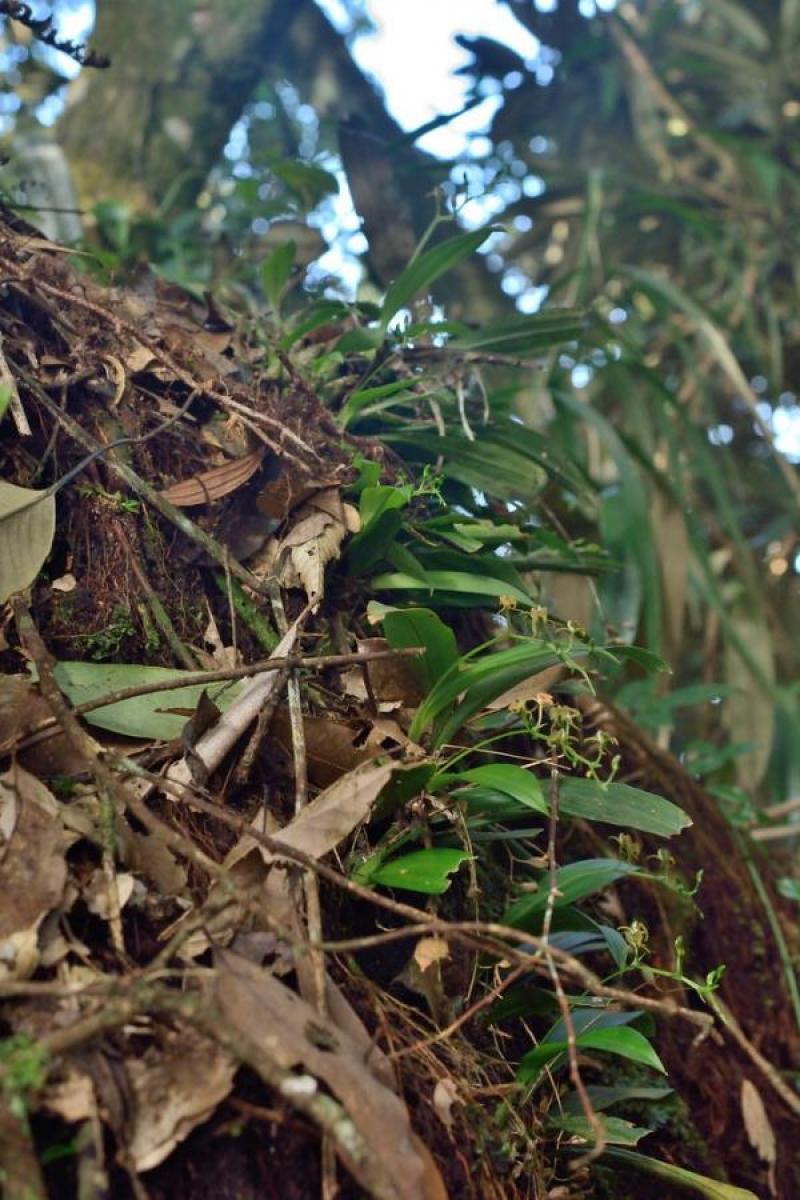Liparis bootanensis
Also known as: The Bhutan Liparis or Liparis amphibius Liparis forbesii Liparis subplicata Liparis lancifolia Liparis pterostyloides Liparis ruybarrettoi Liparis pachypus Cestichis forbesii Cestichis plicata Liparis plicata Liparis uchiyamae Leptorkis plicata Leptorkis forbesii Leptorkis lancifolia Leptorkis pachypus Liparis bootanensis var. uchiyamae in the subfamily: Epidendroideae
Native to: Bhutan Guangdong - China Japan Jiangxi - China Nepal Thailand
General Information
The Bhutan Liparis is a small sympodial warm to hot growing epiphytic, lithophytic or terrestrial orchid belonging to the sub family Epidendroideae native to Bhutan, China, Japan, Nepal, and Thailand.
Plant Description
Sympodial. Grows to 0.5-30cm. Each new growth has a single erect arching, oblong shaped leaf that grows to 1-25cm long. Pseudobulbs grow to 0.4-3cm
Flowers
Numerous blossoms appear during Summer and Autumn
Blooming Season
- Autumn
- Summer
Substrate(s)
- Coarse
- Medium
- Bark
- Charcoal
- Perlite
Care Notes
This orchid goes into a dormancy phase during winter, during this phase it is best not to provide water unless the plant is starting to look thirsty. The lack of water increases the chance of flowering in spring, and also reduces the likelihood of any rot forming. Do not resume watering until new growth has appeared and is growing strongly.
Often a period of intense growth occurs after dormancy. During this time the amount of light, water and fertiliser the plant receives will directly impact the amount of growth that occurs during this time, and in the case of seedlings, will reduce the time required to reach maturity.
It's recommended to heavily reduce the water amount at the middle to end of autumn to trigger dormancy. Leaves on older bulbs will begin to drop during this time while the newer bulbs continue to mature until terminal leaves appear at the tip of the pseudobulbs.
Repotting can be done any time of the year though it's best to do it in early spring when new growth is appearing as this also means new roots will appear to help the plant anchor into the new media and offset any damage to established roots during the repotting process.
Climate
These orchids grow in cool climates, at low altitudes, in cool plains, forests or coastal scrub.
They are forgiving of humidity variances as long as temperatures are kept on the cool side. They can do well outdoors in the garden in cool and temperate areas, though it is important that they are protected from warm dry winds. They can enjoy morning sun especially in winter but will need protection from the hot sun in the afternoon and during summer. With some acclimatisation they may be able to receive more sun.
Grows at low to high elevations. Rainfall ranges from 13mm to 602mm per day, heaviest in July and lightest in March. Humidity ranges from 65% to 84%, highest in July and lowest in March. Temperature ranges from 18C to 26C, highest in March (19C to 26C) and lowest in January (18C to 24C).
Fertiliser
dormant-medium-demand-orchid Use balanced fertiliser year round. Apply fertiliser regularly at half strength year round. Use a high Nitrogen fertiliser during Spring and Summer. Use a high Phosphorous fertiliser during Summer.
Potting
These plants can be sensitive to repotting though should not require repotting regularly. Repotting should be done when the mix has broken down to the point that it doesn't absorb water or holds onto water for far too long, usually the plant shows a decline in growth as well. Repotting is best done after the growing season when the plant has died back.
The mix should be free draining, with a blend of 30% inorganic ingredients such as coarse sand, gravel or perlite, mixed in with about 70% organic ingredients such as peat, leaf litter or decomposed bark. Avoid commercial potting mixes as they can vary wildly and may contain "wetting agents" that can hold onto water for loo long, causing rotting and stunted growth.
Use water retentive media such as moss to prevent roots from drying out quickly This plant does very well in baskets or suspended pots This plant does well mounted to Tree trunks, Fern slabs or Cork slabs. Repotting is best done annually.





























